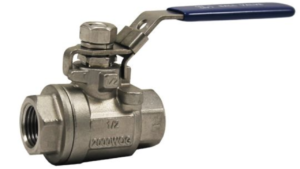In the ever-evolving world of the art market, collecting contemporary art has emerged as an intriguing avenue for investment. While the primary motivation behind collecting art is often a genuine love for creativity and expression, there’s an undeniable financial aspect that makes contemporary art a smart investment choice.
In this blog, we’ll delve into the world of contemporary art and explore the reasons why collecting it can be a savvy financial move.
The Resilience of Contemporary Art
Contemporary art refers to works created by living artists or those who have passed away recently. It reflects the current cultural, social, and political context, making it incredibly dynamic and relevant. This very dynamism contributes to the resilience of contemporary art in the market. Unlike traditional or historical art, contemporary art remains in the public eye, evolving with the times. This constant relevance ensures that it doesn’t lose its value as it ages.
A Growing Market
One of the key reasons why collecting contemporary art is a smart investment is the rapidly growing market. As art gains popularity as an asset class, investors are diversifying their portfolios by allocating funds to the art market. According to the Art Basel and UBS Global Art Market Report, the global art market reached $64.1 billion in 2021. This increasing demand for contemporary art is driven by the art’s capacity to reflect our ever-changing world and capture the zeitgeist.
Emerging Artists and Affordable Entry Points
While established artists often command astronomical prices, contemporary art allows collectors to discover and support emerging talents at more affordable price points. This means you can start your collection without breaking the bank. Investing in the early works of a promising artist can lead to substantial returns as their career takes off. Keep an eye on art schools, local galleries, and online platforms to identify up-and-coming artists with potential.
The Element of Surprise
The volatility of contemporary art is well recognized. Artists constantly experiment with new mediums, techniques, and ideas, which may result in surprising and fascinating outcomes. This element of surprise is not only captivating but can also yield significant financial returns. The next big art movement or groundbreaking artist may emerge from the contemporary art scene, and collectors who have their finger on the pulse can benefit from this innovation.
The Role of Curators and Art Critics
The art world is full of experts who help shape the value and perception of contemporary art. Curators and art critics play a significant role in identifying the artists and works with the potential for long-term success. By paying attention to exhibitions, reviews, and critiques, collectors can gain valuable insights into which artists and works are likely to appreciate in value over time.
Globalization and Diversification
The contemporary art market is highly international and interconnected. Global art fairs, internet auctions, and digital platforms have made it possible for collectors to spread their investments over a variety of international artists and genres. This diversity can increase the likelihood of making lucrative investments and help reduce hazards.
Historical Evidence of Strong Returns
Over the years, there have been numerous instances of contemporary art pieces fetching substantial sums at auction. Famous works by artists like Jean-Michel Basquiat, Banksy, and Yayoi Kusama have sold for millions, showcasing the potential for financial gain. Moreover, some collectors have witnessed their contemporary art investments appreciate exponentially over time.
Tax Benefits and Philanthropic Opportunities
Collecting contemporary art doesn’t just offer the potential for financial returns; it also presents tax benefits and philanthropic opportunities. Many countries provide tax incentives for donating art to museums and cultural institutions, allowing collectors to offset their acquisition costs. Additionally, collectors can actively contribute to the art world by supporting artists and cultural initiatives, which can be a fulfilling aspect of art collecting.
Expert Guidance and Due Diligence
While investing in contemporary art can be a smart move, it’s not without risks. Therefore, it’s crucial to seek expert guidance and conduct due diligence. Consulting art advisors, attending art fairs, and engaging with the art community can help you make informed decisions. Additionally, understanding the market and the artists you’re interested in is essential to avoid pitfalls.
Conclusion
In conclusion, collecting contemporary art can be a smart investment for various reasons. Its resilience in the market, the growing demand, and the potential for substantial returns make it an attractive choice for investors. The opportunity to discover emerging artists at affordable price points, the element of surprise, and the role of curators and critics further add to its appeal. Diversification, historical evidence of strong returns, and the prospect of tax benefits and philanthropy make contemporary art collecting a well-rounded investment strategy.
It is paramount that you engage in this endeavor with prudence and erudition. Due to the nuanced complexity of the art market, acquiring artwork necessitates substantial contemplation, the counsel of seasoned experts, and a profound reverence for artistry. Consequently, while contemporary art may represent a judicious financial undertaking, it also provides an avenue for engagement within the dynamic realm of creative expression, thereby offering an intrinsically gratifying experience.










